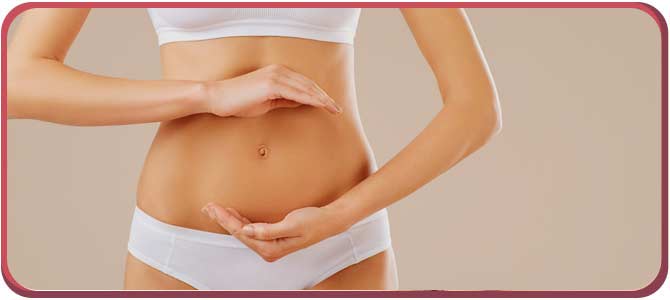Intrauterine Device (IUD): Birth Control, Use & Side Effects
An intrauterine device is a small T-shaped contraceptive device that is inserted into the uterus to prevent pregnancy. It is a long-term, reversible method of birth control. At The OB-Gyn & Incontinence Center, Dr. Prema Kothandaraman offers Intrauterine Device (IUD) service in Arcadia, CA, and Glendale, CA. For more information, contact us today or book an appointment online.




Table of Contents:
What are the pros and cons of an IUD?
Who should and shouldn’t use an IUD?
When is best to have an IUD inserted?
How long is the recovery time for IUD?
An intrauterine device (IUD) is a popular form of long-lasting yet reversible contraception that offers both benefits and considerations.
Pros:
● Highly effective – IUDs are one of the most effective forms of contraception, with a very low failure rate.
● Long-term protection – IUDs can provide long-term contraception without requiring maintenance.
● Convenience – Once inserted, IUDs do not require further action for several years.
● Hormonal and non-hormonal options – There are both hormonal and non-hormonal IUDs available, providing options for individuals with different needs and preferences.
● Reversible – IUDs can be easily removed by a healthcare professional, and fertility typically returns quickly.
Cons:
● Initial discomfort – Some individuals experience mild cramping or discomfort during the insertion procedure.
● No protection against STIs – IUDs do not protect against STIs and should be used in conjunction with barrier methods if STI prevention is needed.
● Side effects – Hormonal IUDs can cause side effects such as irregular bleeding, breast tenderness, and mood changes.
Risk of expulsion or perforation – Although rare, there is a small risk of the IUD being expelled from the uterus or perforating the uterine wall.
While IUDs are a safe and effective form of contraception for many people, there are certain considerations to keep in mind.
Who should use an IUD:
● Women of reproductive age who desire long-term contraception.
● Women who want a highly effective birth control method.
● Women who prefer a low-maintenance contraceptive option.
● Women who have achieved their desired family size and are seeking long-term contraception.
● Women who cannot or do not wish to use alternative contraception methods.
Who may not be suitable for an IUD:
● Women with certain uterine abnormalities or conditions that could increase the risk of complications.
● Women with a history of pelvic inflammatory disease (PID) or current sexually transmitted infections (STIs).
● Women with a known or suspected pregnancy.
● Women who have had recent uterine surgery or abnormalities.
It’s essential to consult a healthcare professional to discuss your medical history and contraceptive needs. Our team can help you determine if an IUD is a suitable option for you and provide personalized advice based on your circumstances.
The best time to insert an IUD depends on several factors, including your menstrual cycle and whether you are currently using another form of contraception. The general guidelines for insertion include:
● Menstrual cycle – For most women, the best time to insert an IUD is during or shortly after your period. This is because the cervix is naturally more open during this time, making the insertion process easier and less uncomfortable.
● Contraception status – If you are switching from another contraceptive method to an IUD, the ideal timing will vary. Your healthcare provider will guide you on the appropriate transition period and advise when it’s best to have the IUD inserted based on the method you are currently using.
● Postpartum or post-abortion – If you have recently given birth or had an abortion, your healthcare provider may recommend inserting the IUD immediately after the procedure or within a specific timeframe.
The recovery period after getting an IUD is generally minimal. Most people can resume their normal activities immediately after the insertion procedure. However, it’s common to experience some mild cramping, spotting, or discomfort for a few days to weeks following the insertion.
● Cramping – It’s normal to experience mild to moderate cramping after IUD insertion. This can be managed with over-the-counter pain relievers or as advised by your healthcare provider.
● Spotting – Some women experience light spotting or irregular bleeding for a few days to weeks after getting an IUD. This is a normal response to the device and should gradually subside.
● Return to normal activities – You can generally resume your regular activities, including work, exercise, and sexual intercourse, promptly after the procedure. It’s important to note that the IUD may not work immediately, so it’s advised to use a backup contraceptive method such as condoms for 1 week after insertion.
While recovery times vary slightly, the majority of women adapt well to the IUD and experience minimal disruption to their daily routines. If you have concerns or experience severe pain or unusual symptoms, it’s advised to contact your healthcare provider for further evaluation and guidance. Our clinics are located in Arcadia, CA, and Glendale, CA. For more information, contact us today or book an appointment online. We serve patients from Arcadia CA, Glendale CA, Monrovia CA, Pasadena CA, Los Angeles CA, Burbank CA and surrounding areas.


Additional Services You May Need
▸ Urogynecology
▸ Minimally Invasive Gynecology
▸ Monalisa & Medical Aesthetics
▸ Bioidentical Hormone Replacement Therapy
▸ Urinary Incontinence
▸ Pelvic Organ Prolapse
▸ Painful Bladder
▸ Urinary Tract Infection
▸ Genitourinary Syndrome of Menopause
▸ Female Sexual Dysfunction
▸ Urinary Retention
▸ Vaginal Laxity & Prolapse
▸ Postpartum Pelvic Floor Problems
▸ PCOD
▸ Bladder Prolapse Repair
▸ Urgent PC
▸ Fibroids
▸ Excessive Bleeding
▸ Pelvic Pain
▸ Birth Control & IUD
▸ Vaginal & Pelvic Infection
▸ Monalisa Touch
▸ STD
▸ TempsureVitalia
▸ Biote Pellet Therapy
▸ Topical BHRT
▸ Flexsure
▸ Rectal Prolapse Repair
▸ Tempsure ENVI
▸ Minimally Invasive Pelvic Surgery for Incontinence



